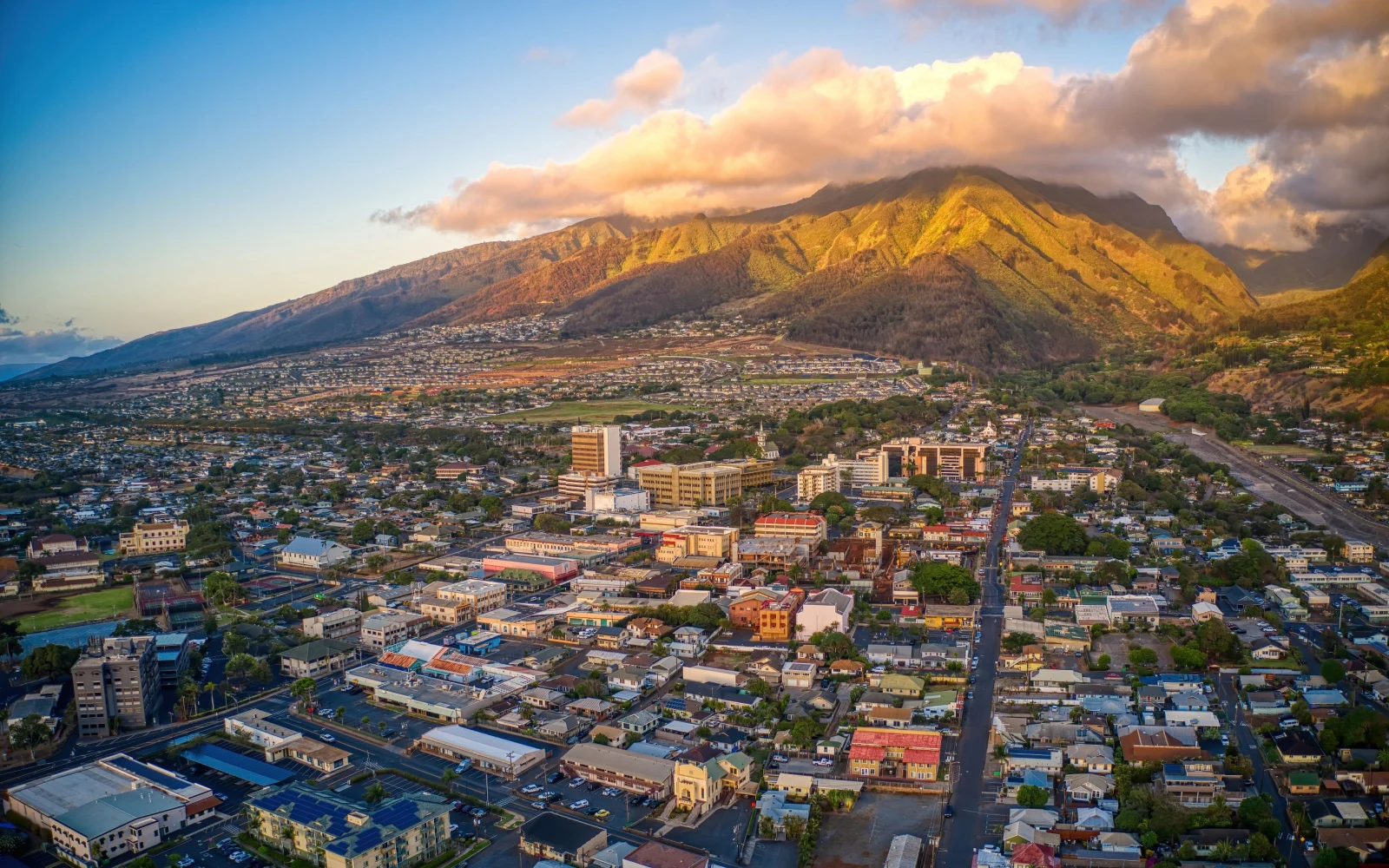What's an average trip to Maui cost?
An average one-week trip to Maui for two costs approximately $3,600, including accommodation, flights, food, activities, and transportation. Maui is known for being expensive, but careful planning and price-shopping for tickets can help you save money. Avoiding touristy expenses like fancy restaurants and prime parking spots can significantly reduce your overall costs while enjoying your trip to Maui.
The name “Maui” conjures up images of vibrant hibiscus, rolling gardens, and turquoise waves. For good reason, too, since that’s exactly what much of this beautiful island is like.
With emerald green hills full of hiking, bustling towns chock-full of delicious restaurants, and a friendly, laid-back atmosphere, Maui is welcoming to all.
Whether you’re there for the surfing (hello, Honolua Bay), the shave ice (plenty of choices there), or simply to rest a while, you’re on the right track. Hawaii does have a reputation for being expensive, though.
Unfortunately, that rap is pretty well-founded. But never fear: with this handy guide in your back pocket, you’ll know exactly how to save money when you travel to Maui.
We’ll discuss various categories of spending as well as the best travel hacks to keep your bank account safe. Ready to learn more? Read on.
Quick note: The wildfires that destroyed the beautiful, historic area of Lahaina have had a lasting impact on Maui’s people – and Hawaii as a whole. Although it will take many years for this area to recover, and it will never be the same, you can help by coming to Maui and helping their economy. Remember to be kind, as many people are still grieving this tragedy and will be for years to come.
Average Trip to Maui Cost in 2025
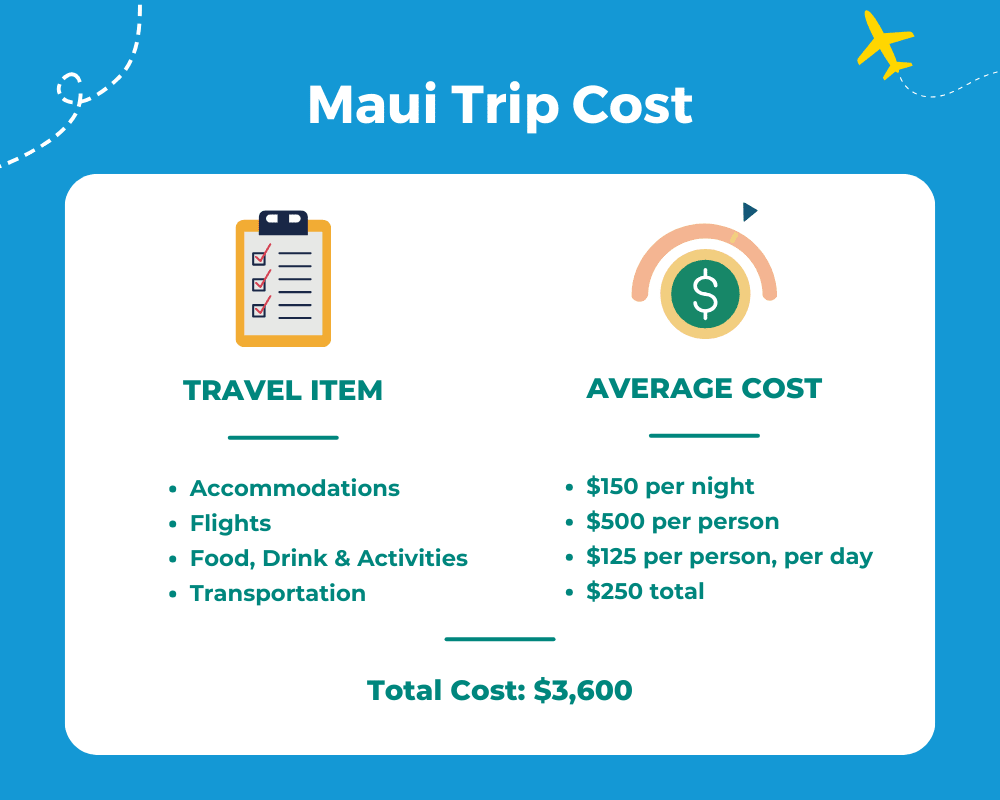
An average one-week trip to Maui for two people will cost around $3,600:
- Average Accommodation Cost: $150 per night
- Average Flight Cost: $500 per person
- Food, Drink & Activities: $125 per person, per day
- Transportation: $250 total
- Total Cost: $3,600
Hawaii is expensive, no doubt about it, and Maui is no exception. However, much of the expense crops up when you a) don’t plan ahead or b) aren’t paying attention.
For instance, if you price-shop for tickets, you’ll pay less than if you just hop on one day and purchase them.
And if you make a plan for getting around that doesn’t involve parking downtown anywhere, then you can avoid ghastly parking fees that will drain your bank account before you can say “But I just wanted to go to a nightclub!”
Maui caters to visitors and depends on their money. Estimates attribute 40% of Maui’s GDP to tourism, which means that they’ve got to get what they can from travelers.
As with anywhere else, you’ll pay a premium for anything touristy: nice restaurants with beach views, prime parking spots, resorts, or tourist items (bathing suits, sunblock).
If you can successfully steer clear of much/all of these, you’ll save beaucoup bucks. Let’s take a closer look at how to do that.
Maui Trip Cost: Average by Item
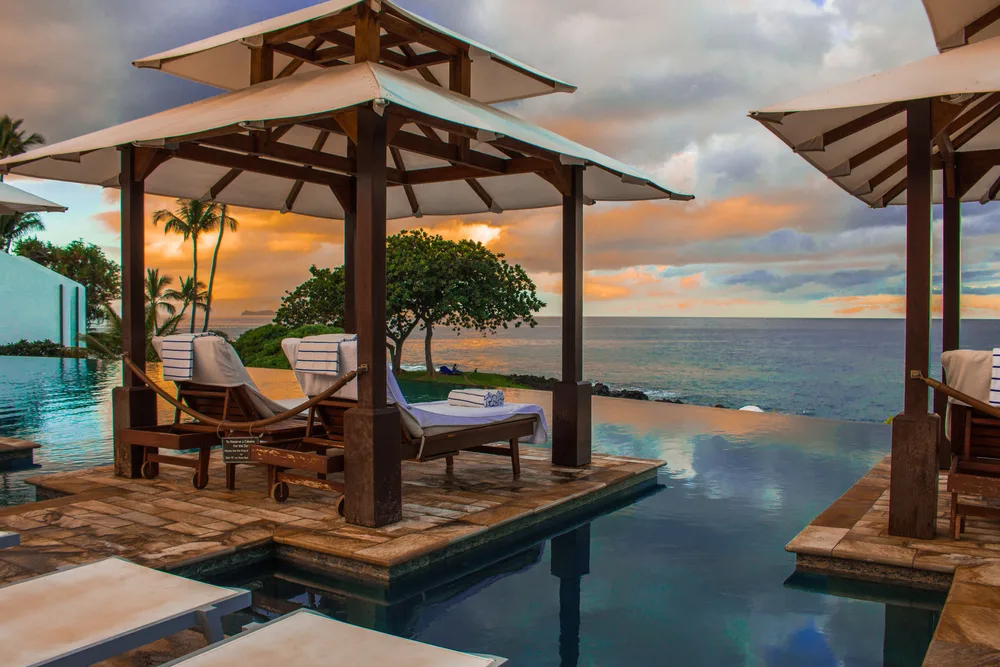
Supitcha McAdam/Shutterstock
The average cost of a trip is just that … an average. Read through the following categories to get a good idea of how much it will cost you to go to Maui, but take it all with a grain of salt.
If you’re a budget traveler, this doesn’t mean you have to spend that much; you could very well spend less. And if you like to vacation in style, just know you’ll spend more.
The whole point is, knowledge is power! Once you have the right information, you can safely plan a trip that works with your goals and budget.
Accommodation Costs
We’ll give it to you straight: hotels in Maui don’t come cheap. A room for two in Kihei will cost between $125 and $250, on average, assuming you do some price shopping.
If you don’t book months ahead of time, they can cost much more than that. In Hana, plan to pay about $200 a night. In Paia, $150 is closer to the mark.
And in Kahului, $150 per night is also possible … though again, if you don’t book well in advance, you won’t even see these prices. Note: in the past, Hawaii has been a great place to enjoy lower costs when you book packages.
However, our research indicates that this isn’t a good strategy right now. You will pay thousands more in accommodations than you would if you were simply to book separately.
Instead of going the package route, price-shop. Start looking for hotels months ahead of time, and jump at any deals you see. It’s okay to book your lodgings before your flight for a domestic trip (don’t do this for international), to give yourself room for flight deals – which we’ll talk about next.
Camping is an inexpensive option for Maui stays. It costs $30 per campsite (up to 10 people), per night for non-residents, and $20 for residents. Cabins are $100 a night for non-residents. You can find out more about reservations here.
Hostels are another budget option, but not nearly as “budget” as they are in the Continental US, Europe, or other places around the globe.
A dorm bed is about $60 on average for one person, which is hardly a better deal than renting a hotel room for two. Overall, plan to spend about $150 a night on Maui.
Flight Costs
Getting to Maui isn’t that expensive. Flight costs from Los Angeles are about $300 round trip, while from New York you’ll pay closer to $500.
If you fly from a nearby regional airport (say, Anaheim near LA or Buffalo near New York), you will pay between $75 and $150 more than if you were to fly straight out of a hub.
You can keep costs down by buying your ticket closer to the date of departure, because airlines are trying to fill up flights, so you’ll see deals pop up.
Between 6 weeks and 5 months before your trip is the sweet spot to search for cheap flights without losing sleep over your ability to get tickets on time. On average, plan to pay about $500 per ticket to get to Maui from the mainland US.
Food, Drink & Activity Costs
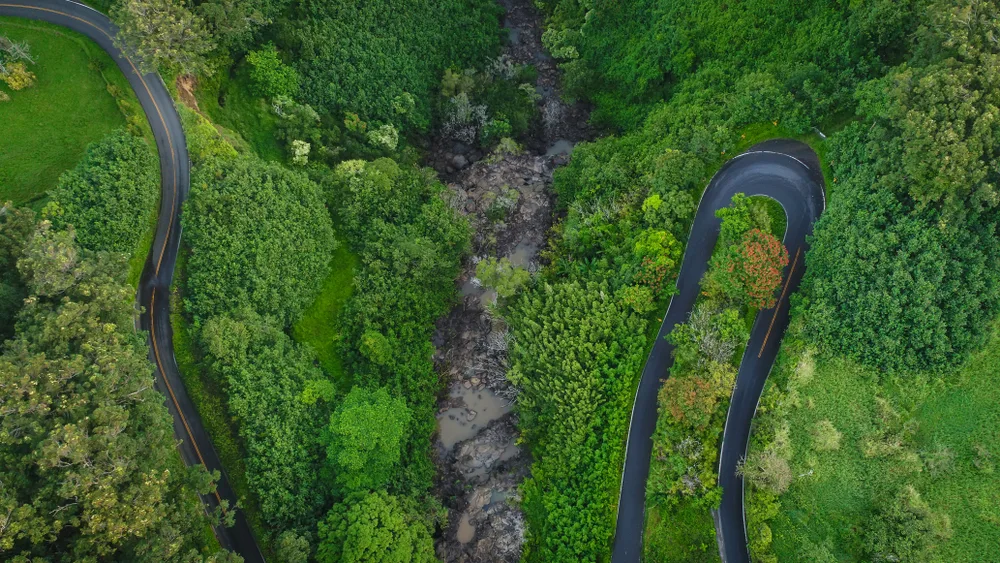
Nicole Glass Photography/Shutterstock
Maui is wonderful for outdoor activities. The beaches, parks, golf, and other fun-in-the-sun escapist activities will keep you occupied nonstop.
Some of these come with costs – such as golf, which will run you between $75 and $100 – and some are free, such as lying on the beach or strolling through town.
The Road to Hana is a famous destination and journey that many visitors to Maui opt to experience – and for good reason. It’s absolutely gorgeous, with views of the coast and around 20 waterfalls in a 50-mile stretch.
Many people stop along the way to swim or take photos, so plan a day to really immerse yourself. Food can get expensive in Maui, so we advise eating lots of meals at street stalls and food carts, which are less spendy than restaurants.
Stay away from resorts or nice restaurants unless you’ve specifically budgeted for them, and take advantage of happy hours if you want to sit down.
All told, plan to spend about $100 a day if you’re mostly enjoying laid-back, free activities, and $150 a day if you’re eating out and taking tours – average it to $125.
Transportation Costs
There are plenty of ways to get around Maui. The buses are affordable and fairly reliable, though the devastation in Lahaina has disrupted the schedule for obvious reasons. You can look up fares here, but a typical fare is $2 for one way.
That said, we strongly recommend renting a car when you visit Maui if you can afford to. There are so many delightful things to do on the island, both around its coastline and inland, and it pays to have ultimate freedom to do them.
That way, you can get to any beach or jungle destination in a few hours, without having to pay the $100-or-so fee for going on a tour packed with other people.
An economy car will start at about $25 a day, while an SUV – more important to have during the rainy season from November through March – is closer to $40 a day.
All told, you can rent a car for a week for an average of about $250, including taxes and fees. If you want to see as much of the island as possible, go that route.
Things to Consider
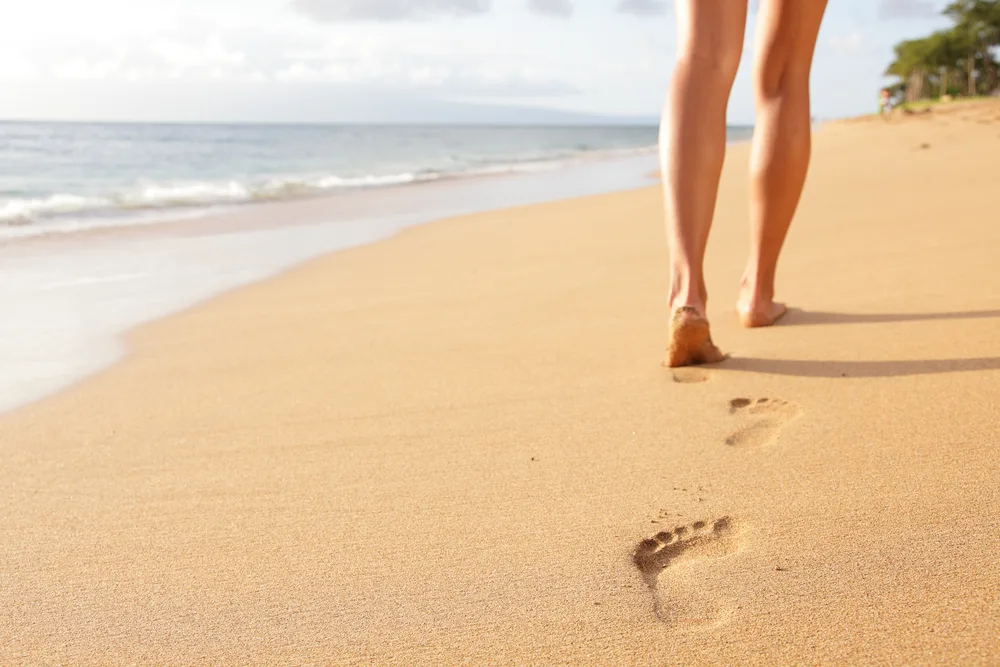
Maridav/Shutterstock
Here are a few other things to consider when planning your trip to Maui:
- There’s never a bad time to go to Maui. There are seasonal changes, such as more rain in winter and higher humidity in summer. However, the difference in air and water temperature is minimal, so you can safely travel to Maui at any time of year and have a lovely time.
- If you have gear, bring it with you. Snorkels, fishing gear, and other equipment are expensive to rent.
- Pre-book outdoor activities. It’s expensive to walk onto boats or into tourist shops, so look online after you get your flights and hotel bookings.
- Always bring sunblock with you, because it’s very expensive if you have to buy it once you get there. Many tourists assume drugstore prices will be the same, but that’s a good way to spend way more than you need to.
Frequently Asked Questions

Alex GK Lee/Shutterstock
Here are some frequently asked questions about budgeting your trip to Maui:
What is unique about Maui vs the other islands?
Maui is essentially 735 square miles of garden and beach. It is one of the most beautiful places in the world and widely considered the jewel in Hawaii’s crown.
While other islands boast awesome surfing, amazing food, pristine beaches, and lovely hikes, Maui’s splendor is unparalleled. If you’re torn between it and Oahu or the Big Island, we recommend opting for Maui first.
What should I pack for Maui?
Maui is known for sunny climes, but it actually cools down quite a bit at night during the most popular travel season. If you’re going to be there November through April, bring a sweater or a light jacket. You’ll also want a rain jacket in case you get caught in a storm.
During this time, you’ll want to pack light clothing as well as warmer clothing. If you’re traveling from May through October, you should pack lighter clothing and assume it will be hot not just all day but into the evenings. Naturally, you’ll want to bring your beach gear with you.
How can I save money on accommodations?
The best ways to save money on your lodging are to book ahead, price-shop, avoid pricey packages, and consider camping, cabins, or hostels. Together, these strategies can help you bring your accommodation fees down to about $100 a night if you include camping and hostels. If not, then your best bet is to watch deals carefully.
Pro tip: if you search for hotels in incognito mode, you’ll avoid tipping off the travel websites that you’re interested. That will ensure that they return accurate prices next time around, rather than jacking up prices based on your intent to travel.
When is the best time to visit Maui?
The most popular times to visit Maui are from December through March. This is when winter-bound Americans want to escape the mainland and get some sun, so even though you’ll face rainier weather during the wet season, it’s still the most popular time. (The rain does bring less humid climes, though, so it’s a trade-off.)
If you want to visit while weather is nice but prices are lower, try the “shoulder seasons.” These include late spring and early fall. Check flights and hotels in April, May, August, September, and October for the best deals.
What should I do inland?
Inland – or “Upcountry,” as the locals refer to it – is a less tourist-packed part of the island. It’s beautiful, with glowing green jungle canopies and pineapple farms. The best activities here include farm visits, volcano hiking, sunsets and sunrises over the ocean, and downtown Makawao with its cowboy vibes.
So, What’s a Trip to Maui Cost?
| 🛎️ Average Accommodation Cost | $150 per night |
| ✈️ Average Flight Cost | $500 per person |
| 🍽️ Food, Drink & Activities | $125 per person, per day |
| 🚕 Transportation | $250 total |
| 💲 Total Cost | $3,600 |
The average cost of a one-week trip to Maui is around $3,600 for two people. Maui is a wonderful destination for singles, couples, and families, but it certainly brings the romance for those who are so inclined.
So what are you waiting for — book your trip today and experience for yourself all that Maui has to offer. Happy travels!



